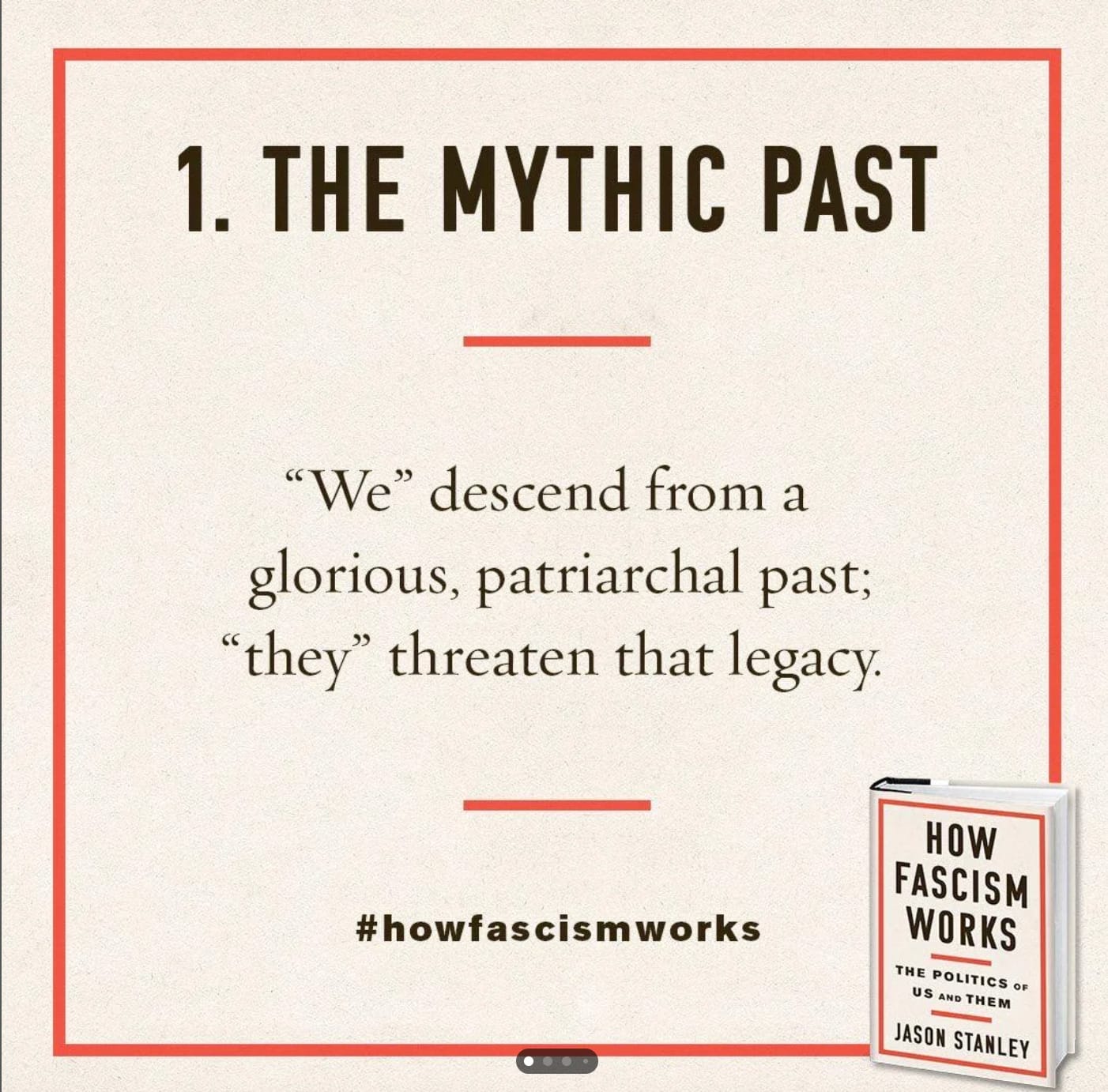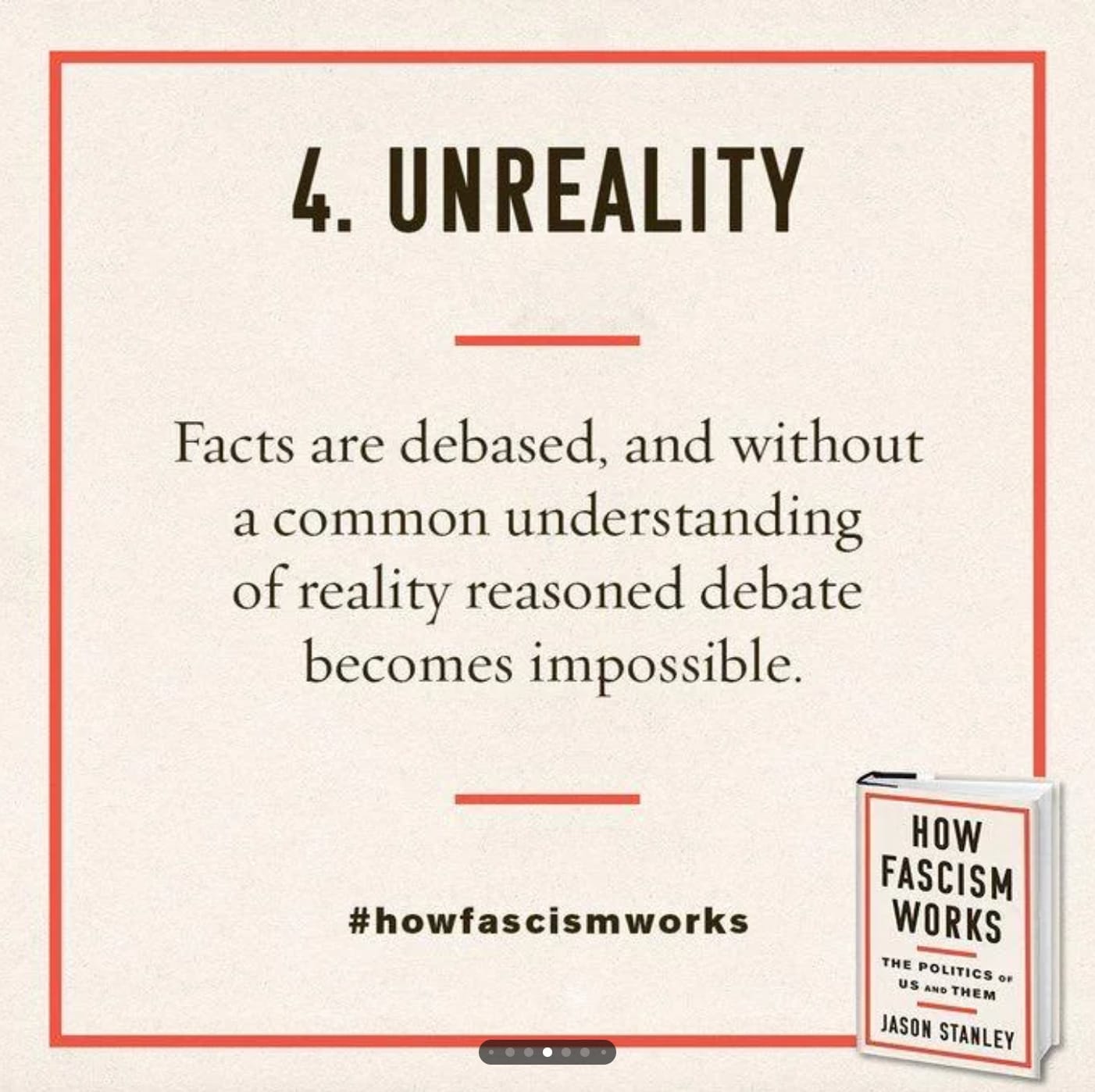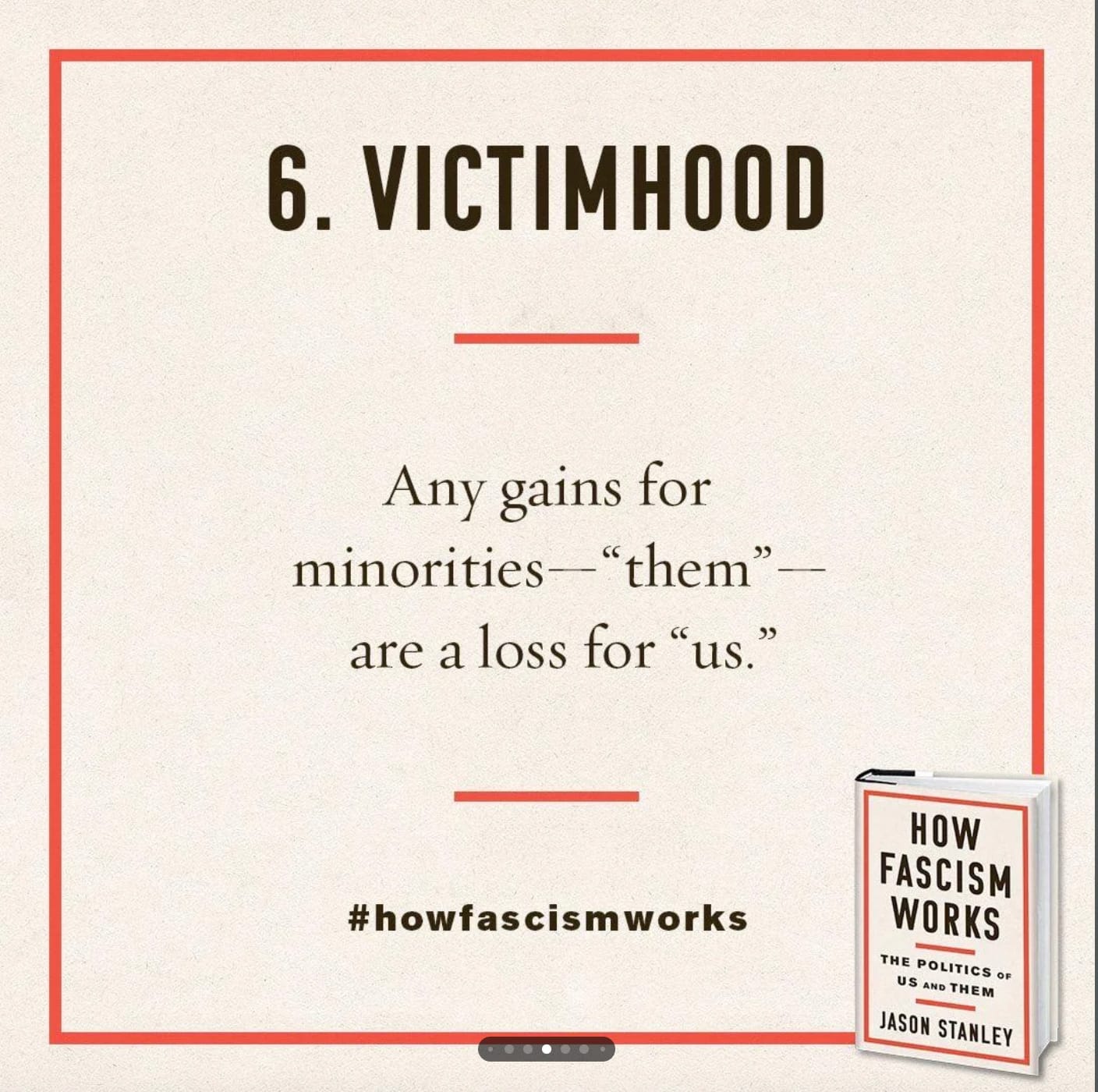Elon Musk's billionaire extremist party exposes ‘centrist’ scam
This is a guest post from FrameLab contributor Jason Sattler. Jason is LOLGOP on BlueSky and pretty much any other

Is fascism on the rise in the United States? Some FrameLab readers have argued that we should be using the word “fascist” instead of “authoritarian,” “conservative” or “right-wing.”
They make a very good point. But what, exactly, is fascism? In “How Fascism Works: The Politics of Us and Them,” Yale University Professor Jason Stanley lists the ten main elements of fascism. We have summarized them below.
FrameLab is free to read, but paid subscribers make our work possible. Please become a paid subscriber if you can. The choice is yours!
Key questions: Which of these elements do we see invading our politics today? Are all of the elements present, or only some? Is it time to use the “F” word to describe what has happened to the Republican Party? We look forward to reading your thoughts in the comments.
The 10 Elements of Fascism, from “How Fascism Works”:
Fascist politics invokes a glorified, mythological past that has supposedly been destroyed or undermined by liberal, foreign, or otherwise corrupting influences.

The use of propaganda to manipulate or control the public narrative is a hallmark of fascist politics. This often involves the use of misleading or blatantly false information to shape public perception.

Fascist movements often distrust intellectuals or the academic establishment, viewing them as part of the corrupt or degenerate elite, and as a threat to the "common sense" of the people.

The creation of a disorienting, alternate reality through the repeated assertion of falsehoods, conspiracy theories, and the blurring of fact and opinion.

The belief in a natural social hierarchy, as well as the supremacy of certain groups over others based on race, ethnicity, or nationality.

Fascists often position their in-group as the victims of an injustice perpetrated by out-groups, thereby justifying any action taken against these supposed enemies.

A strong emphasis on law and order, often as a pretext for suppressing political dissent and marginalizing minority groups.

The exploitation of sexual anxiety as a way to rally support for fascist causes, often through the control and subjugation of women's bodies and the demonization of others' sexual practices.

The portrayal of cosmopolitan or urban areas — cities — as places of moral decay, in contrast to the purity of the rural or traditional heartland.

The glorification of work and the stigmatization of those perceived as not contributing to the labor force, often used to target minority groups or the unemployed.

We encourage all FrameLab subscribers to read this important book. And we look forward to your thoughts.
If you enjoyed this post, please share it with your friends and family.
— Gil Duran | FrameLab
FrameLab is free to read, but paid subscribers make our work possible. Join hundreds of fellow readers in becoming a paid subscriber today. Because YOUR support MATTERS!
Subscribe